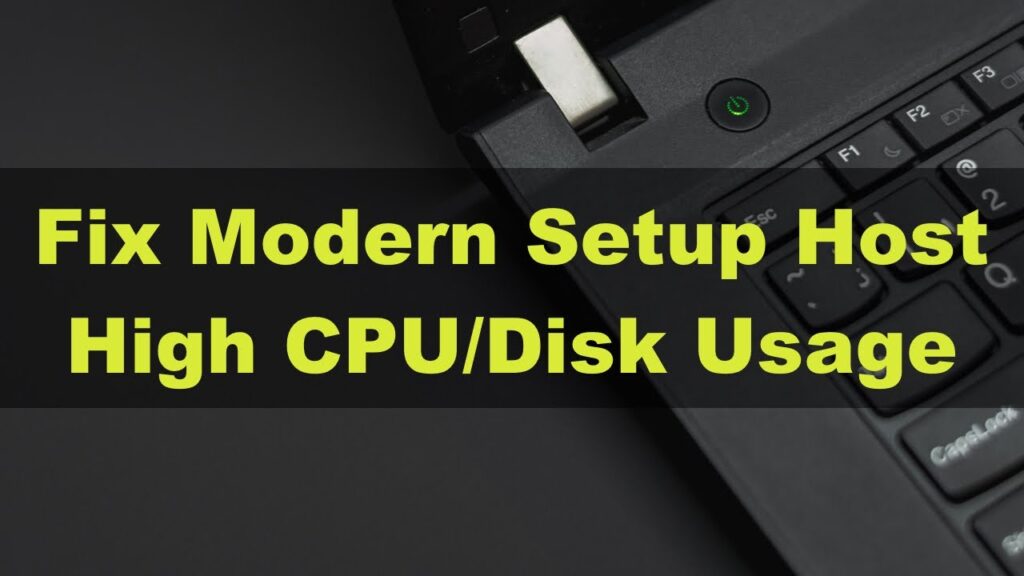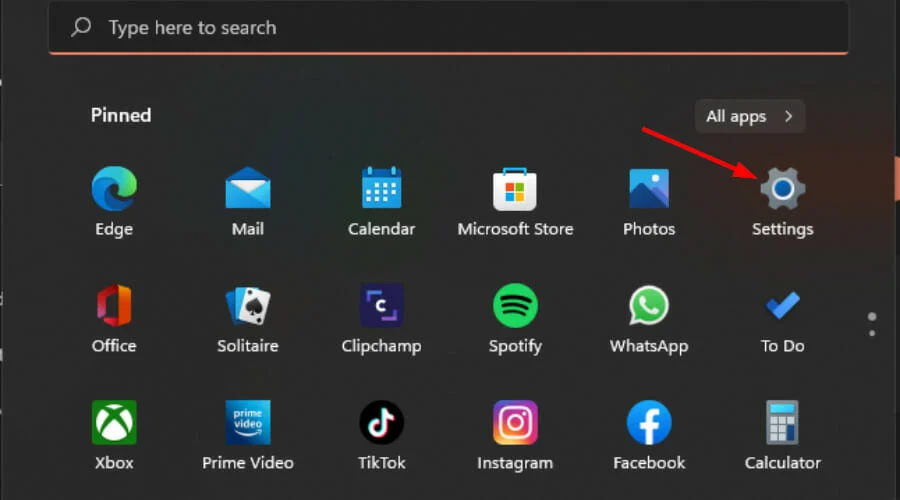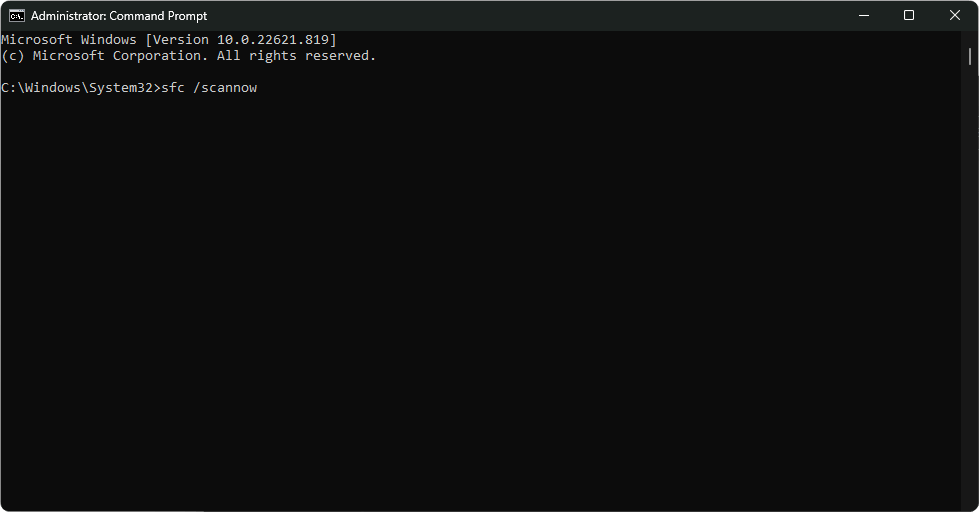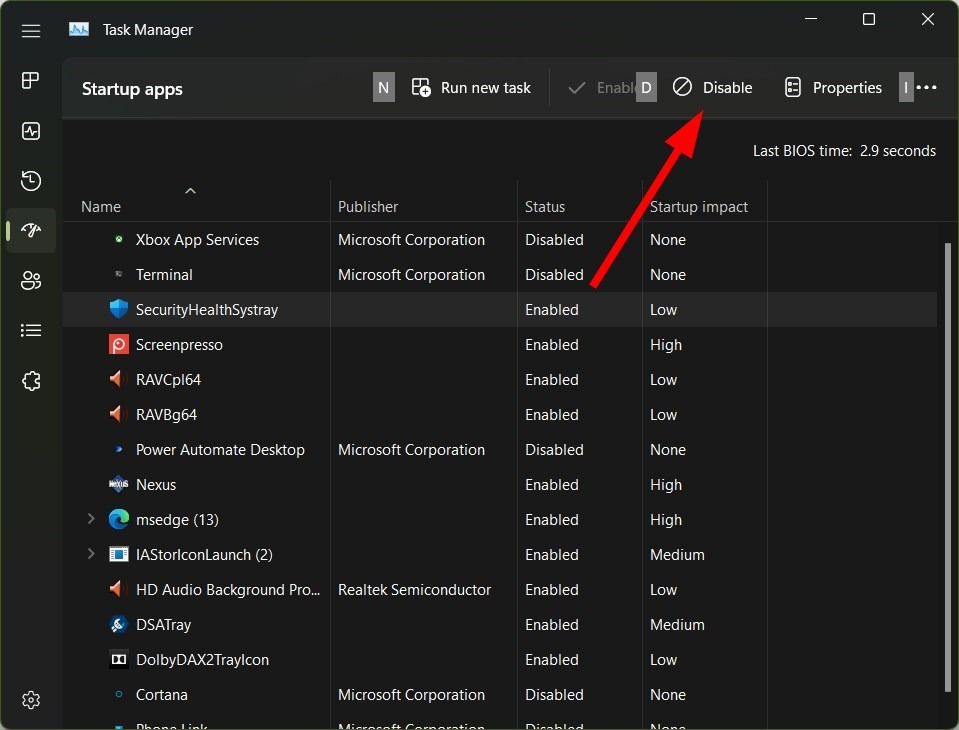Hello users, when you access the Windows Task Manager on your Windows 10 computer, you’ll see a number of system apps and background activities. Some of these processes will be familiar to you. Others, however, are less enthusiastic.

If you see a “Modern Setup Host” eating your PC’s CPU in Task Manager and are curious about what it does, we’ve highlighted all you need to know about the system process in this explainer. As an added bonus, you’ll learn how to determine whether the Modern Setup Host is safe and how to lessen its excessive CPU utilization on your machine.
Recommended Post:- Fixed: Intel System Usage Report Uses too Much CPU
About Modern Setup Host (SetupHost.exe)
The Windows operating system includes the Modern Setup Host. It can be found on any Windows computer, regardless of operating system version or build. Windows downloads and installs the Modern Setup Host installation file (SetupHost.exe) on your machine automatically.
Naturally, in hibernation mode, the process remains inactive, almost as if it does not exist. The Modern Setup Host, on the other hand, comes to life when you install a minor or big Windows update on your PC.
The Windows operating system includes the Modern Setup Host. It can be found on any Windows computer, regardless of operating system version or build. Windows downloads and installs the Modern Setup Host installation file (SetupHost.exe) on your machine automatically.
Naturally, in hibernation mode, the process remains inactive, almost as if it does not exist. The Modern Setup Host, on the other hand, comes to life when you install a minor or big Windows update on your PC.
The Modern Setup Host file is located on your computer’s local drive in the C:/$Windows.BT/Sources folder. It is a self-starting executable setup file that cannot be started manually unless a Windows update is ready to be installed.
Solution 1: Launch the Windows Update Troubleshooter
Because the Modern Setup Host is linked to Windows updates, you can utilize your computer’s Windows Update troubleshooter to look for any problems that are causing the Modern Setup Host CPU consumption.

Check out the steps below to walk you through the process of resolving the Modern Setup Host issue.
- Step 1: Open the Troubleshoot tab on your computer by pressing Windows Key + S, searching for “Troubleshoot,” and then pressing Enter.
- Step 2: Scroll down and click on Windows Update within the Troubleshoot tab.
- Step 3: Finally, under Windows Update, click Run the Troubleshooter and follow the on-screen directions to learn how to utilize the Windows Update Troubleshooter.
On Windows 10, follow these steps:
- Step 1: Select Start > Settings > Update & Security > Troubleshoot from the menu.
- Step 2: From the right panel, select Additional troubleshooters.
- Step 3: Navigate to the Getup and running section and select Windows Update.
- Step 4: To use this tool, click the Run the troubleshooter option.
On Windows 11, follow these steps:
- Step 1: Select Settings > System > Troubleshoot > Other troubleshooters from the Start menu.
- Step 2: To launch Windows Update, click the Run button next to it.
- Step 3: Wait for the troubleshooting process to complete.

If the troubleshooter recommended a possible solution to the problem, click Apply this Fix. Now, restart your computer and open Task Manager to see if the Modern Setup Host is still using a lot of your computer’s resources.
Solution 2: Execute the System File Checker
High CPU utilization on Windows 10 components may signal that some of your system files are corrupted or troublesome. In this instance, you can use the System File Checker, a Windows built-in utility that allows you to scan and restore any corrupted system files.
To run the System File Checker on your computer, follow the procedures outlined below.
- Step 1: On your keyboard, press the Windows key + X and select Command Prompt (Admin).
- Step 2: Type “sfc /scannow” and hit Enter when the CMD prompt appears.
- Step 3: When the scan is complete, a system message will be displayed. See the list below for more information.
- Windows Resource Protection discovered no integrity breaches, indicating that your operating system is free of corrupted or missing data.
- The requested operation could not be completed by Windows Resource Protection – During the scan, the repair tool discovered an issue, necessitating an offline scan.
- Windows Resource Protection discovered corrupt files and successfully repaired them – This message will show when SFC can resolve the problem it discovered.
- Although Windows Resource Protection discovered faulty files, it was unable to repair some of them. – If this error occurs, you must manually fix the corrupted files. See the table below for further information.
After running the SFC scanner on your machine, restart it and visit the Task Manager to determine if the Modern Setup Host process is still consuming a significant amount of CPU resources.
Solution 3: Perform a DISM Scan
Assume the System File Checker did not resolve the excessive use of the Modern Setup Host. In that situation, you can run a DISM scan (Deployment Image Servicing and Management), which is another Windows program that can repair any corrupted system files on your computer.
DISM replaces the corrupted file with a working copy obtained from Windows servers, as opposed to System File Checker, which attempts to repair the corrupted file.

To utilize the DISM scan, follow the instructions below.
- Step 1: On your keyboard, press Windows Key + S and search for “Command Prompt.”
- Step 2: Next, select Run as Administrator to open the Command Prompt.
- Step 3: In the CMD prompt, type the following commands and hit Enter after each one:
DISM.exe /Online /Cleanup-image /Scanhealth
DISM.exe /Online /Cleanup-image /Checkhealth
DISM.exe /Online /Cleanup-image /RestoreHealth
After running the above instructions, restart your computer and try to use it normally for a few minutes to see if the Modern Setup Host is still using a lot of CPU on your system.
Solution 4: Clear the Software Distribution Folder
On Windows, the software distribution folder stores all of the temporary files required for Windows updates. However, it is possible that these temporary files are not automatically cleared after installing Windows updates, causing the Modern Setup Host to operate in the background even if no Windows updates are installed.
To resolve the Modern Setup Host’s heavy use, follow the steps below to erase the contents of this folder.
- Step 1: On your keyboard, press Windows Key + R to open the Run Command Box.
- Step 2: Type “C: WindowsSoftwareDistributionDownload” and press Enter.
- Step 3: Finally, pick and remove all of the folders within the Download folder.
Restart your computer and check to see whether the high CPU utilization of the Modern Setup Host on your system has been resolved.
Solution 5: Conduct a Clean Boot on Your Computer
When you conduct a clean boot, all superfluous drivers and apps are removed from your computer. Only the drivers and software required to operate Windows 10 will be launched automatically.

- Step 1: On your keyboard, press the “Windows” key and the letter “R.”
- Step 2: This will open the Run window, where you may type “msconfig” and hit Enter.
- Step 3: Select the “Services” tab. Tick “Hide all Microsoft Services,” then click “Disable All” and “Apply.”
- Step 4: Next, go to the “Startup” page and select “Open Task Manager.”
- Step 5: In the Startup section, select any unwanted applications that have the startup status activated and click “Disable.”
- Step 6: Exit the window and restart your computer.

Solution 6: In Task Manager, force the task to End
If Modern Setup Host is always running and using too much CPU, memory, or disc space, you can use Task Manager to terminate it. It is simple to do:
- Step 1: Right-click on the Start button and choose Task Manager.
- Step 2: Locate Modern Setup Host and select End job.
Solution 7: Turn off the Windows Update Service
If you don’t want to be bothered by Windows Update, you can temporarily disable it on your computer.
- Step 1: In the taskbar, click the search icon and search for services.
- Step 2: To open it, select Services.
- Step 3: Scroll down and double-click Windows Update to open it.
- Step 4: Expand the Startup type options and pick Disabled.
- Step 5: Press the Apply button.
- Step 6: Press the OK button.
Solution 8: Delete the SoftwareDistribution Folder’s Contents
The SoftwareDistribution folder stores all temporary files associated with Windows Update. If the Modern Setup Host encounters problems such as Modern Setup Host high CPU consumption, Modern Setup Host high memory usage, or Modern Setup Host high disc usage, you should delete everything in this folder and give it another shot.
Solution 9: Troubleshoot in Clean Boot State
Because this issue only happens in the beta version of Windows 10 (Windows Insider Program), it could be a bug. It may also emerge as a result of driver or program compatibility. Try Cleat Boot and see if it helps you grasp the situation better.
Solution 10: Temporarily disable Windows Update Service
As previously stated, this software is linked to Windows Update and upgrades. As a result, if you have previously installed the update and no longer require it, you can temporarily disable Windows Update and see whether this resolves the issue.
It is possible to disable Windows Update on a PC by using the Windows Service Manager. You can also use a third-party program called Windows Update Blocker to instantly disable Windows Update.
Please remember to re-enable Windows Update after a few days to ensure that you receive security and performance upgrades.
Is the Host File in Modern Setup Secure?
Because Microsoft created the Modern Setup Host file, it is safe to have it on your machine. A virus or malware, on the other hand, can masquerade as the setuphost.exe file on your computer.
Downloading the setup file from unauthorized sources or third-party websites puts your computer in danger of downloading a virus-infected Modern Setup Host. This could lead to performance difficulties such as high CPU utilization, battery drainage concerns, and so on. But how do you know whether the setuphost.exe file on your computer is real (from Microsoft) or malware that mimics the Modern Setup Host file?
F.A.Qs
Ques 1. What exactly is a modern setup host on a Windows machine?
Ans. On a Windows computer, a modern setup host is a software tool that assists you in creating, managing, and deploying Windows operating systems and other Microsoft goods. It also assists you in keeping your Windows environment current and secure.
Ques 2. Is it acceptable to terminate the contemporary setup host?
Ans. If you are not experiencing any problems with your machine, it is safe to terminate the contemporary setup host process in Windows. If you are having computer problems, it is essential to contact a technical support specialist to help you troubleshoot the situation.
Ques 3. What is the purpose of Setuphost.exe?
Ans. The Setuphost.exe process serves as a host process for numerous Microsoft Windows components. The Windows Installer service, the Windows Update service, and the Microsoft Management Console are among these components.
Ques 4. Why is contemporary host CPU use so high?
Ans. There are several reasons why current systems have high CPU use. One possible explanation is that the computer is attempting to run too many processes concurrently and is straining to keep up. Another scenario is that a process is consuming a lot of resources and not properly releasing them, causing the CPU utilization to surge. Furthermore, malware or other dangerous programs may be running on the computer, consuming resources and increasing CPU utilization.
Conclusion
Are you bothered by Modern Setup Host’s high CPU consumption, Modern Setup Host’s high memory usage, and Modern Setup Host’s high disc usage? You shouldn’t be too concerned about it. You can use the methods presented here to address the problem.







